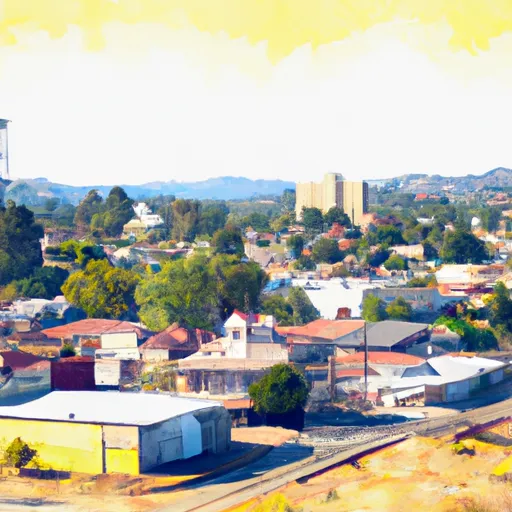-
 Snoflo Premium
Snoflo Premium
Get unlimited access to all our content
With no Ad interruptions! - Start Your Free Trial Login with existing account
Twain
Eden Index
Climate
10.0
•
Recreation
8.5
•
Community
•
Safeguard
7.0/10

Twain, California is a small unincorporated community located in Plumas County, nestled in the Sierra Nevada mountain range. The town experiences a Mediterranean climate, with warm, dry summers and cool, wet winters. Summers are typically mild, with temperatures ranging from the mid-70s to low 90s Fahrenheit, while winters are colder, with temperatures often dropping below freezing.
Hydrologically, Twain is surrounded by an abundance of natural beauty. The community is situated near the Feather River, which flows through the area, providing opportunities for fishing and recreational boating. Additionally, numerous lakes and reservoirs can be found nearby, including Lake Almanor and Bucks Lake, offering further water-based activities.
Outdoor recreation enthusiasts will find plenty of opportunities in Twain. The region is known for its stunning hiking trails, allowing visitors to explore the beauty of the surrounding mountains and forests. Horseback riding, mountain biking, and off-roading are also popular activities in the area. During the winter months, nearby ski resorts offer skiing and snowboarding options.
With its appealing climate, stunning hydrology, and a variety of outdoor recreation opportunities, Twain, California is an ideal destination for nature lovers seeking a peaceful and adventurous getaway.
What is the Eden Index?
The Snoflo Eden Index serves as a comprehensive rating system for regions, evaluating their desirability through a holistic assessment of climate health, outdoor recreation opportunities, and natural disaster risk, acknowledging the profound impact of these factors on livability and well-being.
Climate Health Indicator (CHI): 10.0
Twain receives approximately
990mm of rain per year,
with humidity levels near 63%
and air temperatures averaging around
11°C.
Twain has a plant hardyness factor of
8, meaning
plants and agriculture in this region tend to thrive here all year round.
By considering the ideal temperature range, reliable water supplies, clean air, and stable seasonal rain or snowpacks, the Climate Health Indicator (CHI) underscores the significance of a healthy climate as the foundation for quality living.
A healthy climate is paramount for ensuring a high quality of life and livability in a region, fostering both physical well-being and environmental harmony. This can be characterized by ideal temperatures, reliable access to water supplies, clean air, and consistent seasonal rain or snowpacks.
Weather Forecast
Streamflow Conditions
Lower Sacramento
Area Rivers
Lower Sacramento
Snowpack Depths
Lower Sacramento
Reservoir Storage Capacity
Lower Sacramento
Groundwater Levels
Recreational Opportunity Index (ROI): 8.5
The Recreational Opportunity Index (ROI) recognizes the value of outdoor recreational options, such as parks, hiking trails, camping sites, and fishing spots, while acknowledging that climate plays a pivotal role in ensuring the comfort and consistency of these experiences.
Access to outdoor recreational opportunities, encompassing activities such as parks, hiking, camping, and fishing, is crucial for overall well-being, and the climate plays a pivotal role in enabling and enhancing these experiences, ensuring that individuals can engage in nature-based activities comfortably and consistently.
Camping Areas
| Campground | Campsites | Reservations | Toilets | Showers | Elevation |
|---|---|---|---|---|---|
| Little Beaver | 120 | 5,066 ft | |||
| Milsap Bar | 20 | 1,639 ft | |||
| Feather Falls | 5 | 1,528 ft | |||
| Tooms RV | None | 5,049 ft | |||
| Golden Trout Crossing | 5 | 4,002 ft | |||
| Black Rock Tent(Family ) | 20 | 5,052 ft | |||
| Peninsula Tent (Family ) | 25 | 5,033 ft | |||
| Little North Fork | 6 | 3,807 ft | |||
| Red Feather | 60 | 5,055 ft | |||
| Wyandotte | 28 | 5,060 ft |
Nearby Ski Areas
Catastrophe Safeguard Index (CSI):
The Catastrophe Safeguard Index (CSI) recognizes that natural disaster risk, encompassing floods, fires, hurricanes, and tornadoes, can drastically affect safety and the overall appeal of an area.
The level of natural disaster risk in a region significantly affects safety and the overall livability, with climate change amplifying these risks by potentially increasing the frequency and intensity of events like floods, fires, hurricanes, and tornadoes, thereby posing substantial challenges to community resilience and well-being.
Community Resilience Indicator (CRI):
The Community Resilience Indicator (CRI) recognizes that education, healthcare, and socioeconomics are crucial to the well-being of a region. The CRI acknowledges the profound impact of these elements on residents' overall quality of life. By evaluating educational resources, healthcare accessibility, and economic inclusivity, the index captures the essential aspects that contribute to a thriving community, fostering resident satisfaction, equity, and social cohesion.

